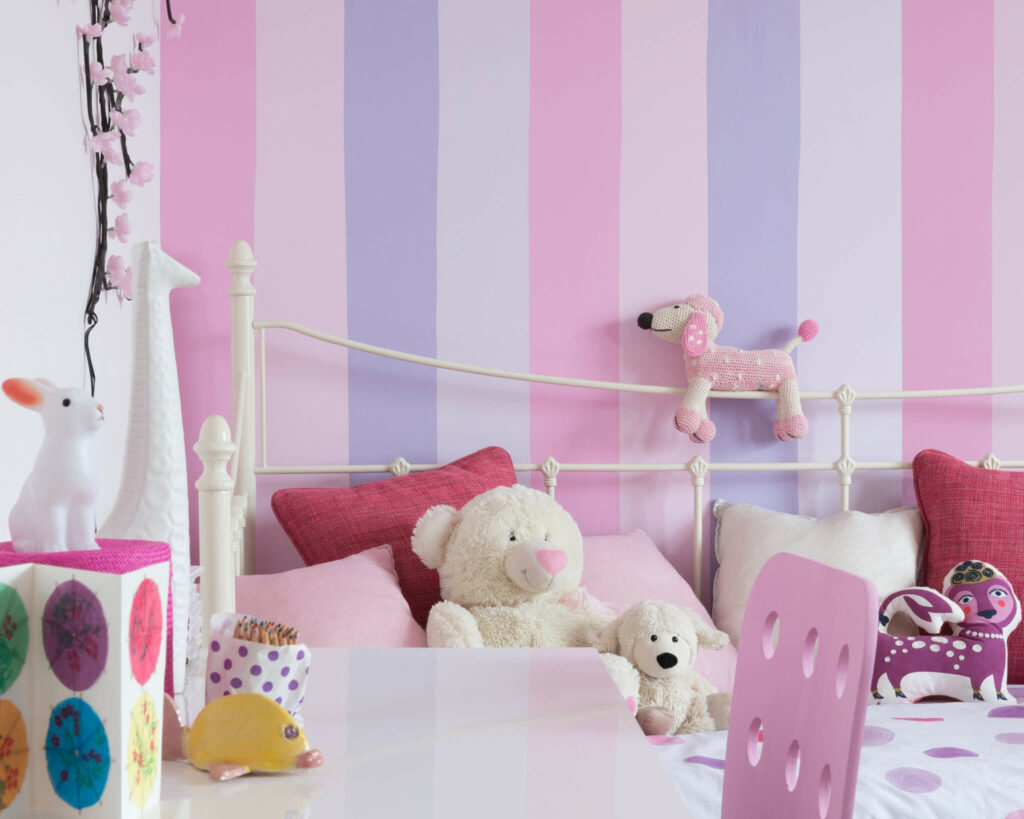One of your kids has grown tired of their room? or are you expecting a baby? The first thing that you’ll probably think of is what colour scheme you should go for. Children are highly emotional, so colours can either inspire, excite, heal, soothe, calm or even depress and agitate. So it’s all about getting the right balance and the importance of choosing the right colours shouldn’t be underestimated.
Psychologists are now weighed in on the significance of selecting the best paint colours for children’s quarters. Children’s moods are influenced by their surroundings, which also involve the shades of their room.
Colour science has been around for a long time. Each of those colour schemes is selected with caution due to the impact they have on the kids in the audience.
Choosing paint for your nursery needs close attention as well. It occurs to everyone so it’s time to get a little adventurous with the decors! Here’s what that has been discovered about colours and their known effects after doing some analysis for children’s rooms:
Red
Red is a very stimulating hue. According to certain research, red raises the pulse rate and respiratory rate. It has been shown to energize children and perhaps increase emphasis, making it a common classroom accent colour. However, excessive red exposure appears to cause aggression in some children, especially toddlers.
Red turns out to great accent colour, particularly when cool colours need to be balanced. An exposed brick accent wall, for example, adds a touch of red to space without overpowering the colour scheme.
Orange
Orange is a joyful and vibrant colour that has been found to improve contact and socialization. Children who play in orange-coloured spaces are more social, extroverted, and optimistic.
Of course, so much orange, like any warm colour, can be overstimulating and have the reverse effect. Although orange can bring out a shy child’s chatty side, too much orange can confuse them and make them feel irritable and uninterested in becoming pleasant.
Orange, especially the softer shades of orange, works better as an accent colour. Combine orange with soft pink, lavender, or a neutral cream hue.
Yellow
Any space will feel more upbeat and sunnier with the addition of yellow. According to certain research, children who serve or study in yellow rooms have greater attention and memory recall.
Bear in mind, though, that if the child is struggling with bedtime or wakes up early, yellow is likely to exacerbate the issue. If a room exudes too much of a “daytime” vibe, an overly excited child will struggle to calm down.
When combined with grey, blue, or green, yellow works wonderfully as an accent colour. This combination encourages the good qualities of yellow to come through without making the child upset or furious, which can happen when there is an excess of yellow.
Pink
Pink is at the top of any list of girls’ space paint suggestions. Of course, both sexes may benefit from being treated to pink-coloured spaces. Pink is a soothing colour that promotes empathy and caring emotions. It may encourage children to be more nurturing and considerate, perhaps because pink is synonymous with a “motherly” feeling.
Brown
Brown is a timeless and earthy colour that will make children feel more secure and grounded in their surroundings. Brown also serves well as a backdrop for lighter colour splashes, enabling parents who prefer Brown as a foundation to get a bit more adventurous while also reaping the rewards of a stable feeling environment.
Of course, so much brown will dramatically darken a bed. If the child has worrying issues, it is not a good idea to surround them in Brown. Stay for tan or beige shades to brighten it up a little, and use dark brown as a dramatic accent.
Green
Green is a calming hue that evokes the freshness of nature and outdoor play. Many schools, especially middle and high schools, prefer to use green in classrooms because research suggests that it can improve reading ability and comprehension.
Green could be an excellent option if your child would be doing the majority of their homework in their bed. The darker the colour, as with any cool colour, the darker the bed. A forest of pine green can be overpowering and even gloomy, while a mint or tea green can potentially help calm an agitated boy.
Blue
When it comes to boy room shades, blue is always at the top of the list. Of course, being surrounded by this soothing and reassuring hue will help both sexes.
Blue is also recommended as a room colour for children who are susceptible to tantrums. Blue has been found to reduce anxious people’s pulse rate, blood pressure, and respiratory rate.
Purple
Purple, also regarded as the “runner-up” colour for girl’s quarters, evokes thoughtfulness, sensitivity, and spirituality. Adding purple to a child’s room will make them calm down and stop and understand the emotions and opinions of others.
If you already have a very sensitive girl, purple can probably be limited to accents rather than an entire colour scheme. Overdoing it, as in any cool colour sound, will result in gloomy feelings and even a touch of physical sluggishness.
Purple can be brightened by using the contrasting hue, orange. You may also use deeper purple tones to soften lighter colours like spring green or hot pink.
Gray
When used as an accent colour, grey can be very striking, but having it the primary colour of any room can contribute to feelings of isolation. If someone wishes to bring grey into the child’s room, do so in moderation. Gray accents, for example, can help to balance out a bright yellow space, or they can help to break up an overpowering colour scheme like turquoise or magenta.


